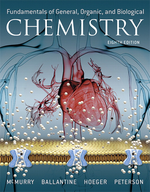?What is the density of lithium metal (in \(\mathrm{g} / \mathrm{cm}^{3}\) ) if a cube
Chapter 1, Problem 1.89(choose chapter or problem)
What is the density of lithium metal (in \(\mathrm{g} / \mathrm{cm}^{3}\) ) if a cube measuring \(0.82 \mathrm{~cm} \times 1.45 \mathrm{~cm} \times 1.25 \mathrm{~cm}\) has a mass of 0.794 g?
Text Transcription:
g/cm^3
0.82 cm times 1.45 cm times 1.25 cm
Unfortunately, we don't have that question answered yet. But you can get it answered in just 5 hours by Logging in or Becoming a subscriber.
Becoming a subscriber
Or look for another answer
